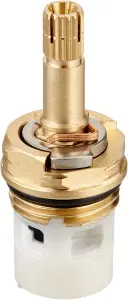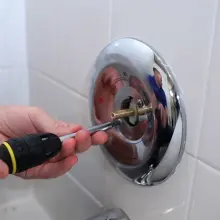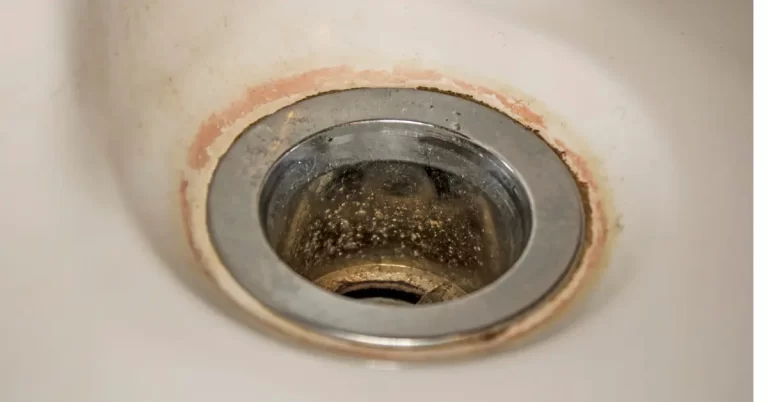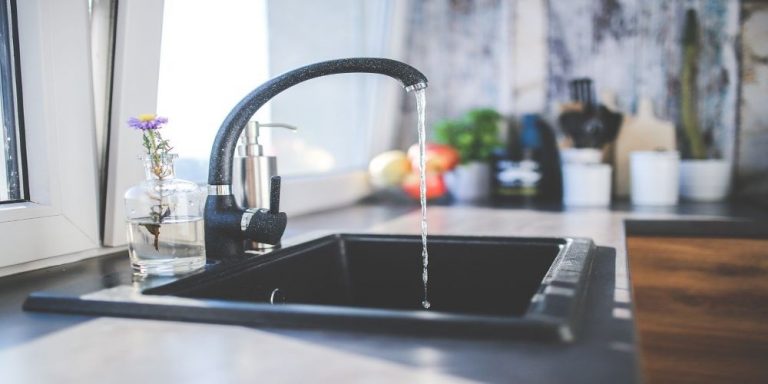How To Remove A Stuck Faucet Stem? 6 DIY Steps
Whether you are a homeowner, a renter, or a professional plumber, you may come into a stubborn faucet. Faucets are an important component of every home’s plumbing system. They can become worn or damaged with time, resulting in leaks, drips, or other failures. A faucet that won’t turn off or on owing to a blocked stem is a common issue for homeowners. This can be aggravating, especially if you need to use the sink or bathtub for daily duties like dishwashing or showering.
Fortunately, removing a stuck faucet stem is not as difficult as it may seem. With a few basic tools and some patience, you can save time and money by fixing the problem yourself. In this article, we’ll provide you with step-by-step instructions on how to remove a stuck faucet stem, as well as some troubleshooting tips in case you encounter any issues along the way.
How To Remove A Stuck Faucet Stem?

If you have a faucet that’s stuck and won’t budge, removing the faucet stem may seem like a daunting task. However, with the right tools and a little bit of patience, you can easily remove a stuck faucet stem by following these steps:
Step 1: Turn off The Water Supply
Before you begin, it’s important to turn off the water supply to the faucet. This can usually be done by turning the valve under the sink or shutting off the main water supply to the house. This step is important to prevent any water from flowing out of the faucet when you start to remove the stem.
Step 2: Remove the Faucet Handle
A set screw, which is often found on the handle’s bottom, is used to secure the handle in place. Use the right-sized screwdriver to remove the set screw before removing the handle. Take caution not to lose or damage the screw while removing it.
In the absence of a set screw, your faucet handle might be secured in place by a stylish cap. A flathead screwdriver or a knife blade can be used to remove this cap.
The screw holding the handle in place may be seen once the cap has been taken off. Lift the faucet handle off with care after removing the screw with a screwdriver. To prevent damaging any of the faucet’s components or threads, care must be used when removing the handle.
Step 3: Remove the Packing Nut

You will discover a long stem that continues down into the faucet body after removing the faucet handle. The huge hexagonal-shaped nut that is just below the handle and surrounds the stem is known as the packing nut. It can be loosened by turning it counterclockwise with pliers or an adjustable wrench. To avoid damaging the threads, hold the nut securely but not too tightly.
Spraying the packing nut with penetrating oil, such as WD-40 or Liquid Wrench, may help if it is very difficult to remove. This will aid in dislodging any corrosion or mineral buildup that might be the root of the nut’s sticking issue.
Step 4: Remove the Stem

It could be challenging to get rid of a stuck stem without harming the stem or body of the faucet. To prevent doing any harm, it’s crucial to take the appropriate safety precautions and follow the right procedures.
Give the lubricant a few minutes to soak in and dislodge any dirt or mineral buildup that might be causing the stem to cling after applying it to it. The stem removal will be simpler as a result. This may assist in removing the stem from the plant by loosening it. To avoid damaging the stem or faucet body, avoid tapping the stem too firmly.
The stem should be tightly grasped and rotated counterclockwise using adjustable pliers. A lot of force can break the stem or harm the faucet body, therefore exercise caution when using it.
You can use a stem puller to free the stem if it is still stuck. A tool called a stem puller is made specifically for unsticking jammed faucet stems. Gripping the stem, it pulls it out of the body of the faucet. When using a stem puller, be sure to adhere to the manufacturer’s directions to prevent any harm.
Be careful not to harm the threads on the stem or faucet body when removing the stem. For the stem to be held in place and to create a tight seal, the threads are crucial. It may be challenging to install a replacement stem or leaks may result from damaged threads.
Step 5: Clean the faucet body
After the stem is removed, you can clean the faucet body to remove any debris or mineral buildup that may be causing the stem to stick. You can use a wire brush or a toothbrush to clean the faucet body. Be sure to clean the threads on the faucet body as well.
Step 6: Install the new stem
You may put in a replacement stem after cleaning the faucet body. Make sure the stem and faucet body’s threads are clean, then coat them with a little plumber’s grease. After that, use pliers or an adjustable wrench to tighten the packing nut on the replacement stem after screwing it into the faucet body. Replace the faucet handle, then restart the water supply.
Read also – The Ultimate Guide: Step-by-Step Bathtub Faucet Stem Replacement
What Are Some Common Reasons Why Faucet Stems Can Become Stuck?
There are several reasons why faucet stems can become stuck. Some of the most common reasons include:
- Mineral buildup: Minerals like calcium and lime can accumulate inside the faucet stem over time, causing it to become stuck. This is particularly common in locations with hard water.
- Corrosion: Corrosion can develop when the metal portions of the faucet come into prolonged contact with water. This can cause the metal to rust and weaken, making it more difficult to remove the faucet stem.
- Age: Older faucets are more prone to trapped stems. The faucet’s pieces might get worn or broken with time, making it more difficult to remove the stem.
- Overtightening: The faucet stem can become trapped in the faucet body if it is overtightened. This can happen if the packing nut or handle has been overtightened, making removal of the stem difficult.
- Improper maintenance: If the faucet is not properly maintained, the stem might become stuck. This can occur if the faucet is not cleaned on a regular basis or if the components are not oiled as necessary.

Meet Ralph Matthews, father of 2 cute daughters and a skilled plumber with over 10 years of experience in the industry. Ralph has particular expertise in repairing any type of faucet and has helped countless homeowners and businesses solve their plumbing problems with his expert knowledge and attention to detail.
Recommended By Faucetsshowerguide's Team
Santa's Certified Letter - Personalized Letter - Christmas Gift
Weight Loss for Men - Oral Sermorelin Peptide






